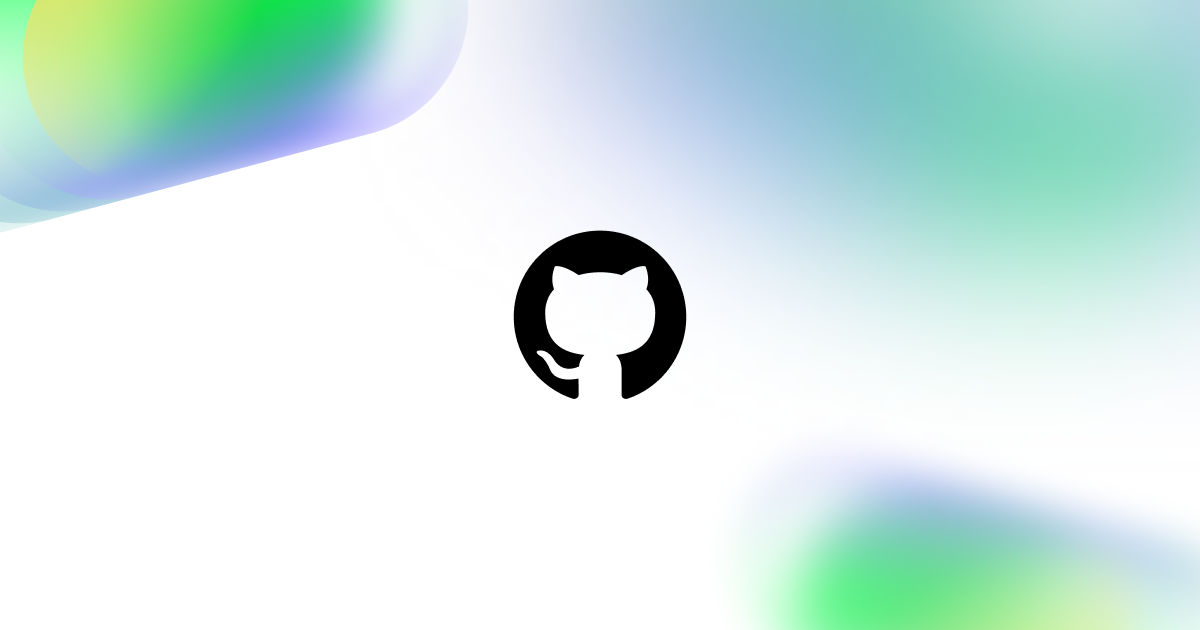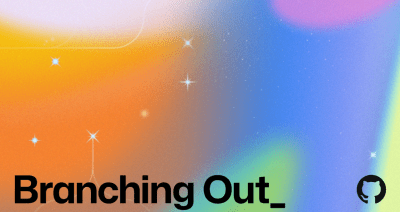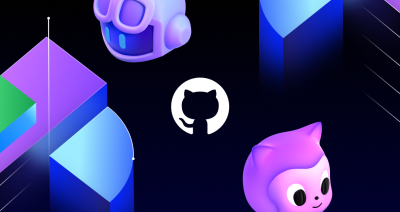To learn more about how businesses are incorporating flow state into their processes, read Developer experience: What is it and why should you care? and explore how GitHub can help.
How to get in the flow while coding (and why it’s important)
Explore what flow state entails, its benefits, and three tips for reaching it the next time you code.

It’s the dream: your ideas are flowing, time and space fade away, the path ahead of you is clear, you’re moving at the speed of thought, and every click you make is gold.
This is called being in the flow or flow state. When you’re in the flow, you block out the world, are fully immersed in what you’re doing, and enjoy increased creativity, innovation, and happiness.
“Being in the flow is magical,” says Jonathan Carter, technical advisor of the CEO at GitHub. “You tell your teammates they can go to lunch and you’ll catch them later—not because you’re a workaholic, but because there’s truly nothing else you’d rather be doing right now.”
In this blog, we’ll explore what flow state entails, its benefits, and three tips for reaching it the next time you sit down to code. Let’s go.
What exactly is the flow state?
The concept of flow state came from positive psychologist Mihaly Csikszentmihalyi and his 1990 book, Flow: The Psychology of Optimal Experience. In it, Csikszentmihalyi describes nine dimensions of flow:
- Challenge-skills balance
- Total concentration
- Clear goals
- Immediate feedback
- Transformation of time
- Feeling intrinsically rewarded
- Effortlessness
- Loss of self-consciousness
- Feeling of total control
Csikszentmihalyi discovered these dimensions by conducting research to understand how people achieve productivity and happiness. He found that in people’s favorite, most absorbed moments, their thoughts and actions “flowed,” and brought unrivaled motivation, meaning, and creativity.
“Software has historically been viewed as mathematical or scientific in nature, but I would argue that writing code has more in common with other creative acts,” says Idan Gazit, senior director of research at GitHub. “Whether you’re writing an essay or writing a program, the challenge is getting into the headspace where you can untangle the thing you want to express.”
What are the benefits of flow state for developers?
When developers reach that coveted frame of mind, their productivity soars. According to our recent developer productivity research, developers produce higher quality work when they can easily collaborate—a hallmark of flow state—through comments, pull requests, issues, etc. According to the study, developers reported that effective collaboration provides a host of benefits:
- Improved test coverage
- Faster, cleaner, more secure code writing
- Novel, creative solutions
- Speedier deployments
On the flip side, when developers can’t freely collaborate, their work suffers (it takes 23 minutes, on average, to get back into the task at hand after an interruption, according to a study from the University of California, Irvine).
And flow state isn’t important just for individual developers—it helps businesses, too.
“When it comes to business success, flow state is everything,” says Chris Reddington, senior manager of developer advocacy at GitHub. This is because today’s environments use dozens of languages and often leverage multiple cloud providers, creating pressure, complexity, and distractions. He adds, “The more we can help engineering teams stay in the flow, where they are just focused on solving those bigger problems, the better.”
Quick tips for developers who want to get and stay in the flow state
So, how can you achieve flow state during your day-to-day tasks? The following tips should help you reach the flow state and stay there—regardless of industry or where you are in your developer career.
Tip #1: Optimize your environment
Creating a distraction-free environment that’s conducive to work can pay huge dividends. Here are some ideas:
- Block time. Create personal focus events on your calendar where no one can schedule meetings with you.
- Schedule breaks. Use a timer to give yourself 15-30 minute breaks throughout the workday.
- Snooze Slack and phone notifications. Be antisocial and make yourself unavailable to the world.
- Eliminate or reduce multitasking. Being able to do more than one task at a time is a myth, anyway.
- Invest in headphones. Noise-canceling headphones, in particular, can keep your stress down and your focus high.
- Get comfortable. Invest in ergonomic office equipment, wear comfortable clothes, and ensure you’ve had enough to eat.
- Hold on scheduling meetings. If you’re a team leader, be mindful of meeting frequency.
- Create a pre-flow ritual. Routines like grabbing coffee, checking your messages, and then putting your phone on silent can cue your brain that it’s time to get to work.
Of course, even with our best attempts, distractions happen. If you need to step away from the task at hand, that’s okay. Gazit also suggests pair programming or solution design to help overcome mental hurdles.
“It’s a great magic trick,” he says. “Stepping back and talking through the problem with a teammate is often the fastest route to getting unstuck.”
He also adds that GitHub Copilot can be helpful for this.
“GitHub Copilot is never busy,” he says. “I’m not distracting it when I put it to work. Debugging with a rubber duck is fantastic, but GitHub Copilot is the rubber duck that talks back. It helps me reason about the solution space and suggests approaches I wouldn’t have considered.”
Tip #2: Map out your work
You can also achieve flow state by ensuring you have a clear path for accomplishing your goal.
Gazit describes how he can get into the flow state when he correctly nails the balance of architectural work. This is especially important when it comes to complex tasks like designing an API, where you first have to build an architecture while considering how it will be used and what kind of load it’ll put on your database.
“If I do the architectural work well, I can then do the bricklaying with a feeling that I’m super clear on what I’m doing,” he says. “I know exactly where I’m going.”
Reddington notes that mapping your work and the practice of blocking time, as mentioned above, often go hand in hand.
“When I block out chunks of time, I can figure out how I’m going to solve the problems I’m tackling appropriately,” he says.
However, he warns that you’re not always going to fix the things you’re trying to do in the allotted blocked time. But at least you can start mentally organizing.
Finding the optimal mix of challenge and skill is also important to achieve flow. If something is too easy, you’ll be bored and unsatisfied. If it’s too challenging on the other hand, you’ll be stressed about not not getting it done, which will also keep flow elusive.
“A good mix can make all the difference,” Reddington says.
Tip #3: Find joy in the work you’re doing
You won’t be able to hit flow state if you’re not enjoying yourself.
“It’s only when you’re not worrying about meetings, or your email, or what you’re going to have for dinner, that you can hit the flow state,” Carter says.
It’s a similar experience to being entertained.
“It’s like when you’re reading a book and you just have to finish the next chapter or you’re binging Netflix and you need to see the next episode,” he says. “It’s that same energy.”
Enjoyable work pertains to teams, too.
Carter notes that office work enjoyment can be increased by clearly articulating the outcomes you’re trying to accomplish. When a product manager writes a well-articulated issue that clarifies the end result, there’s a higher likelihood that the team will be more motivated to take that work on and do it quickly.
“They’re not focused on the complexity anymore but on the desire to get there,” he says.
Similarly, if you’re involved in a project you don’t enjoy, it can be useful to rethink why you’re doing that work in the first place.
“I find that if I can recreate the mindset of why we should solve the problem, I can bootstrap curiosity and get back into the flow state,” he says.
The bottom line
Achieving flow state can significantly enhance norepinephrine, dopamine, anandamide, serotonin, and endorphins—increasing feelings of motivation and intrinsic reward, as well as pattern recognition and lateral thinking ability. It’s a win for productivity, well-being, and keeping the intrinsic developer fire strong.
“With flow state, you’re never at a point where you’re performing the same mechanics twice,” Carter says. “You’re learning in response to what you’re doing. You’re naturally interested, building up an unconscious muscle of curiosity. The learning potential is endless.”
Tags:
Written by
Related posts

Why developer expertise matters more than ever in the age of AI
AI can help you code faster, but knowing why the code works—and sharpening your human-in-the-loop skills—is what makes you a great developer.

How to create issues and pull requests in record time on GitHub
Learn how to spin up a GitHub Issue, hand it to Copilot, and get a draft pull request in the same workflow you already know.

The difference between coding agent and agent mode in GitHub Copilot
We’ll decode these two tools—and show you how to use them both to work more efficiently.
